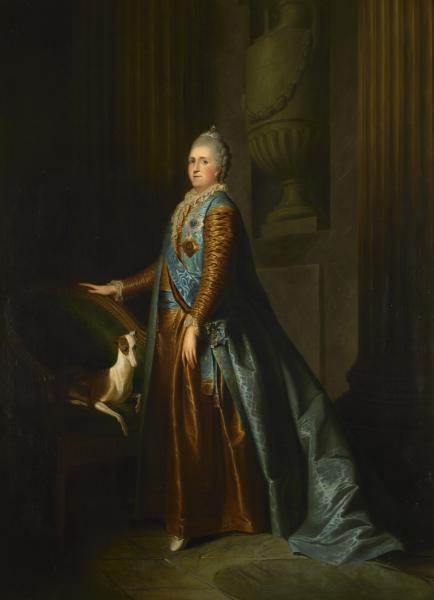The artist is unknown

Ekaterina II (Great; 1729-1796)-nee Princess Sofia Augustus Frederick Angalt Codeskaya. Born in the German city of Stetin. In 1744, she arrived in Russia as the bride of Grand Duke Peter Fedorovich, the future Emperor Peter III. In the same year she accepted Orthodoxy with the name of Ekaterina Alekseevna and was married to Peter Fedorovich in August 1745. In 1754 she gave birth to an heir, future emperor Paul I. She did not work out with her husband, and Peter III intended to send his wife to the monastery. In the summer of 1762 she headed the guards and overthrew Peter III, becoming an empress. In the early years of government, it adhered to politics "enlightened absolutism", But after the peasant war, led by Emelyan Pugachev (1773-1775) and the great French bourgeois revolution (1789), she was forced to tighten the regime. Woned the victorious wars with Turkey (1768-1774; 1787-1792) and Sweden (1788-1790). During its reign, Russia included Crimea (1783), North Black Sea region, Baltic states, eastern parts of Poland, Aleutian Islands, Russian settlements in Alaska were created, Eastern Georgia was taken under patronage. Prestige of Russia – Europe has grown many times.
Olga Savenkova. Exhibition catalog in Malaga "The Romanov dynasty". 2017. With. 229.
By definition of p. N. Petrova, depicts “standing in a brocade dress and blue Simarre”, with ribbons and stars of the orders of St. Andrew the First -Called and St. George. In an armchair next to Catherine is one of her favorite English levets – sir (sire) Tom Anderson or Duchesi. The portrait is a varied copy from the original p.-E. Falcone (GE), performed by a professional master in the last quarter of the 18th century. P. N. Petrov dated the original p.-E. Falcone 1769 (Kat. historical exhibition. With. 110. No. 391). D. AND. Rovinsky believed that “Falconet, the son wrote in 1774, including the portrait of Catherine II, which the empress did not like” (Rovinsky. T. 4. Stlb. 397). Portrait from the GE collection (canvas, oil; 238.5 x 164; GE-4480) was written in 1774 for the Chesmensky Palace. N. X. Unknown artist. SPb, 2012. With. 52.
Leave a Reply